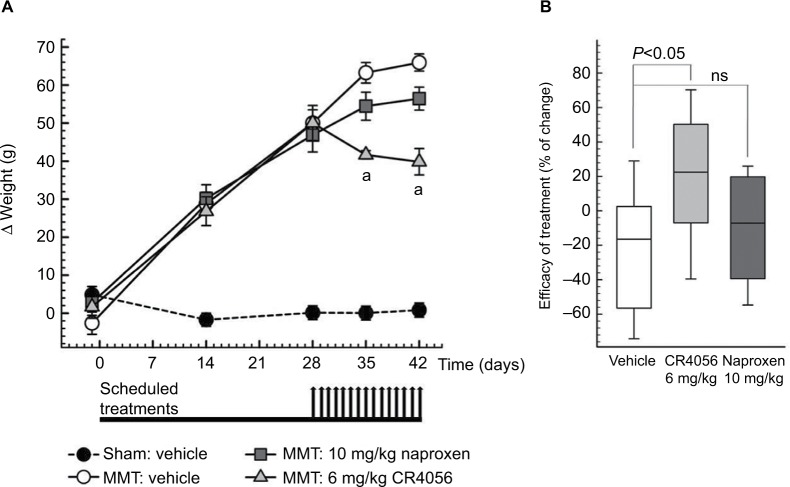Figure 3.
MMT model of OA: effect of CR4056 and naproxen on the behavioral assessment of hind paw weight distribution (HPWD). (A) The difference in HPWD (Δ) between contralateral and ipsilateral knees (in grams) was evaluated 1 day before and 14, 28, 35, and 42 days after MMT surgery using an incapacitance tester. CR4056 (6 mg/kg) and naproxen (10 mg/kg) were administered orally, once a day under the schedule indicated by the arrows positioned in the graph below the axis of time (days). Data, collected 24 hours after the drug administration, represent the mean ± SEM of nine animals per group. aP<0.001 versus MMT control rats treated with vehicle; two-way mixed model ANOVA, Holm-Sidak test. (B) Efficacy of 2 weeks of treatment with CR4056 (6 mg/kg) and naproxen (10 mg/kg) assessed as percent difference between Δ weight measured at day 28 (before the beginning of treatments) and day 42 after MMT surgery. Data (N=9 animals/group) were plotted as box-and-whisker plot. The box spans the interquartile range (25th–75th percentiles), while the line within the box denotes the median. Whiskers extend from the 10th to the 90th percentiles. Statistical significance was calculated by one-way ANOVA followed by Tukey’s multiple comparisons test.
Abbreviations: MMT, medial meniscal tear; OA, osteoarthritis; ANOVA, one-way analysis of variance, SEM, standard error of the mean; ns, not significant.

